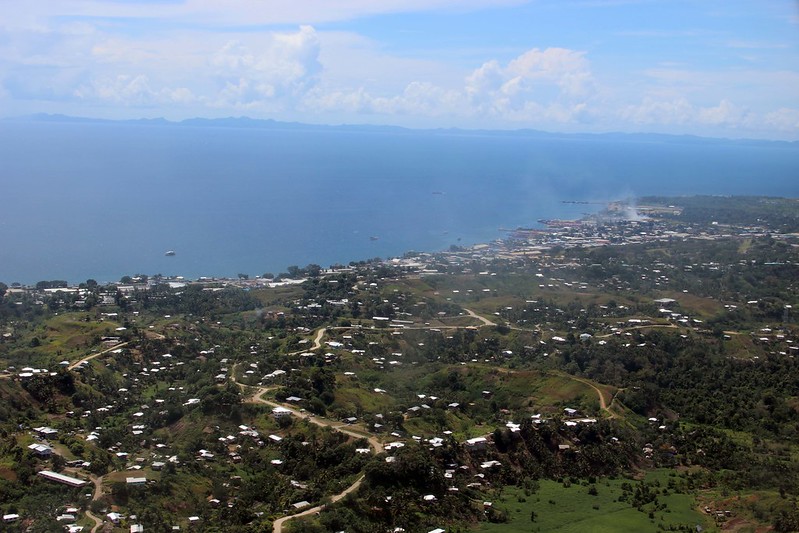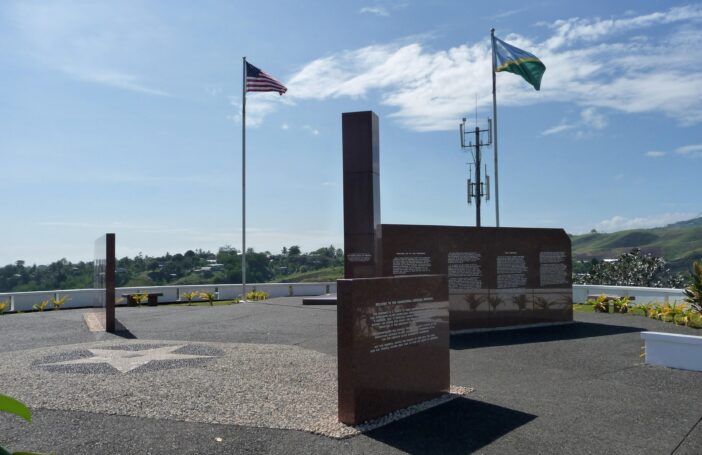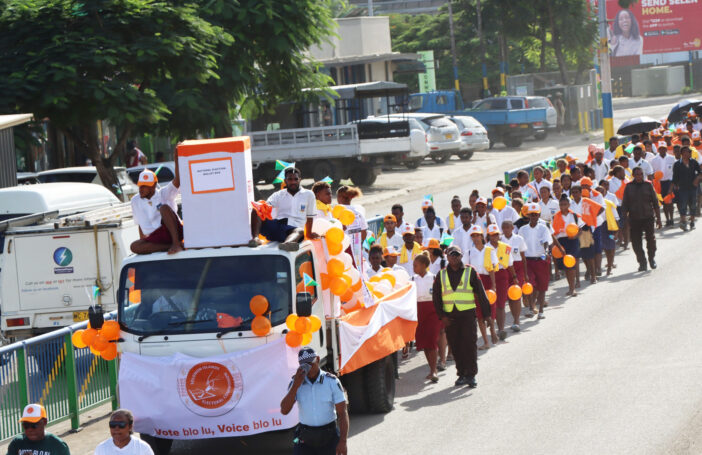 Like most cities, Honiara is bound by its geography, history and culture. In my new book – Honiara: Village-City of Solomon Islands – I explore these relationships and how they have created the city we see today.
Like most cities, Honiara is bound by its geography, history and culture. In my new book – Honiara: Village-City of Solomon Islands – I explore these relationships and how they have created the city we see today.
Military bases in the Solomon Islands are in the news, although most people seem to have forgotten that Honiara began as a Second World War battle ground and military base, initially Japanese and then American. Once they had chased out the Japanese, the Americans christened their base Camp Guadal. After the war, faced with a devastated Tulagi (the first capital), the British chose to transfer to Camp Guadal and begin again. They inherited five airfields, of which they used two, and although miserly with what they purchased from the Americans, Britain used what they could of Camp Guadal. Eventually it became Honiara, the name a corruption of Nahona`ara, meaning facing the `ara’, the place where the southeast winds meet the land.
Remnants of the war have mainly gone now – particularly the once ubiquitous Quonset huts that dominated the architecture of the early town. The other leftover is less pleasant: the wartime munitions that have never been properly cleaned up. Disgracefully, both Japan and America have shirked their responsibilities. Chapter two of the book is a detailed outline of the war years.
Honiara was also shaped by its geography. There is a narrow coastal plain backed by many parallel low ridges, and the whole area is quite dry, with a lower rainfall than in most areas of the Solomon Islands. The coast was allocated to government institutions; gradually the elite built houses on the ridges and the poorer residents lived in the valleys. Over several decades most public recreational land along the coast was sold off to developers; even one of the main stadiums is dominated by shops and accommodation. As squatter settlements stretched into the valleys, lack of planning left far too little public recreational land for a city of 160,000 people. These extensive village-like settlements make Honiara unique. Solomon Islanders shaped Honiara, not town planners.
Despite the rapid growth of urbanisation, writing Pacific urban history remains in its infancy. I took an unusual approach and rather audaciously attempted to summarise Honiara in one diagram. I argue that over decades there have been four, and sometimes five, changing and intersecting Honiara ‘worlds’, each with different social, economic, and political significance.
There were few Solomon Islanders living in Honiara until the early 1950s but, even at this stage, the beginning of Malaitan dominance was clear.
Four or five Honiara ‘worlds’ were in operation by the 1960s and 1970s: one British, one Solomon Islander, one Chinese, and one made up of Gilbertese migrants and other Pacific Islanders who were in Honiara for employment or education. A Malaitan ‘world’ grew strong, both in numbers and in social significance, far more so than for other Solomon Islanders in the capital. While the Chinese extended their economic power, Malaitans overwhelmed Honiara numerically and in many social ways.
In my suggested divisions, Fijians and Indo-Fijians were only significant in early decades, usually arriving as tradesmen, and the presence of other Pacific Islanders undertaking education was transitory – a product of the 1960s and 1970s. The Gilbertese are not listed separately after the 1970s and 1980s, because they have become citizens of Solomon Islands. In the 1980s and 1990s, Honiara’s Asian population broadened to include old and new Chinese families (the waku) and other Asian groups. They took over most of the modern economy of the independent nation in a manner that had never been possible for the Chinese in Tulagi before the Second World War.
Indigenous national consciousness also developed, partly planned by the British through the creation of local and national political and educational institutions, but inevitably also home-grown, taking on unique Solomon Islander characteristics. During these recent decades, the nation both lost and found its way, politically and economically. Along the road were mismanagement and corruption, and the ‘tension’ years, when the nation came to the brink of anarchy and was described by some as a ‘failing state’. The RAMSI years (2003–17) were a Pacific Islands Forum initiative, attempting to rebuild major governance structures. I end the book in 2020, with Solomon Islands once more a totally independent Pacific nation and Honiara woven into these recent events.
In some ways, I have been in training to write about Honiara for 45 years, and my work on Malaitan history has enabled me to deal with one of the key aspects of Honiara: the substantial number of residents of Malaitan descent. Understanding their background and place in Honiara is an important part of the book. Malaita has long been the most populous island in Solomon Islands, and this Honiara book is the fourth I have written wholly or partially centred on Malaitans.
I suggest that a rudimentary Malaitan ‘world’ separate from, and dominant over, all other Solomon Islander urban communities has existed in Honiara since the 1940s and emerged very clearly well before independence in 1978. Honiara’s Malaitan ‘world’ has since grown ever stronger, numerically and culturally. I am not advocating Malaitan dominance, superiority, or separation, but as a historian, I cannot ignore what has occurred. It is a unique situation, not matched in the history of neighbouring nations such as Papua New Guinea and Vanuatu. Yet, I expect this influence will wane and not remain such a strong difference.
The only way forward is for all Solomon Islanders to be equal, and for future development to assist all areas of the nation – the smaller provinces just as much as the larger, more populous ones. The processes of modernisation will ensure that over the next few generations there will be further intermarriages that will eventually create one nation. Islands of origin will become less significant.
This is already beginning to be evident in modern Honiara.
Clive Moore’s book Honiara: Village-City of Solomon Islands was published by ANU Press this month. It is available to purchase or download for free.







An excellent analysis of evolution of Solomon Isl. I agree with all variables identified that contributed to the birth of new Solomon Islands.